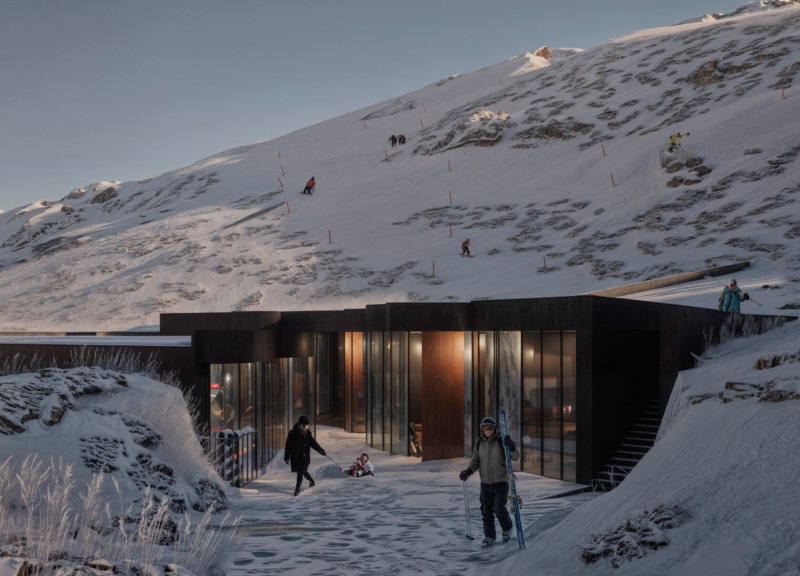5 key facts about this project
Central to the project is the concept of integration within its geographical context. Nestled in an environment that reflects local cultural influences, the structure engages harmoniously with its landscape, creating a dialogue between built form and nature. The careful selection of materials such as concrete, glass, timber, and brick enhances this conversation, allowing the building to blend seamlessly into its setting while also standing out as a modern intervention. The materials are chosen not just for their aesthetic value but also for their sustainability. The incorporation of energy-efficient features signifies a dedication to ecological responsibility.
The design manifests a clear understanding of spatial organization. Interior spaces have been arranged to promote flow and accessibility, facilitating movement and interaction among users. This thoughtful arrangement enhances the functionality of the building, ensuring that it serves diverse needs. Community spaces are prioritized, reflecting an understanding of the importance of social engagement in architectural design. The layout encourages users to gather, collaborate, and participate in various activities, enriching the community experience.
Unique design approaches are evident throughout the project. The utilization of large windows invites natural light, which not only illuminates spaces but also connects the interior environment to the outdoors. This connection to nature is further emphasized by landscape features that complement the architectural framework. The orientation of the building takes advantage of natural ventilation, reducing the need for artificial climate control and promoting a healthier indoor environment.
In terms of architectural detailing, careful attention has been given to how materials meet and interact. The junctions between different materials are treated with precision, ensuring that transitions are both practical and visually appealing. The project also incorporates innovative technologies that support energy efficiency, such as solar panels and rainwater harvesting systems. These features reflect a progressive mindset towards design, aiming to minimize the environmental impact while enhancing user comfort.
Overall, this architectural project not only fulfills its functional requirements but also engages deeply with the principles of sustainability and community. It encourages a lifestyle that values interaction and environmental consciousness, making it a relevant addition to contemporary architecture. For a more thorough understanding of the intricacies that define this project, including architectural plans, sections, and design ideas, readers are encouraged to explore the complete project presentation. Engaging with these elements will shed light on the thoughtful decisions that shape this architectural endeavor, offering insights into its impact and relevance in today's urban landscape.


 Joel Cotardo Valcarcel,
Joel Cotardo Valcarcel, 























